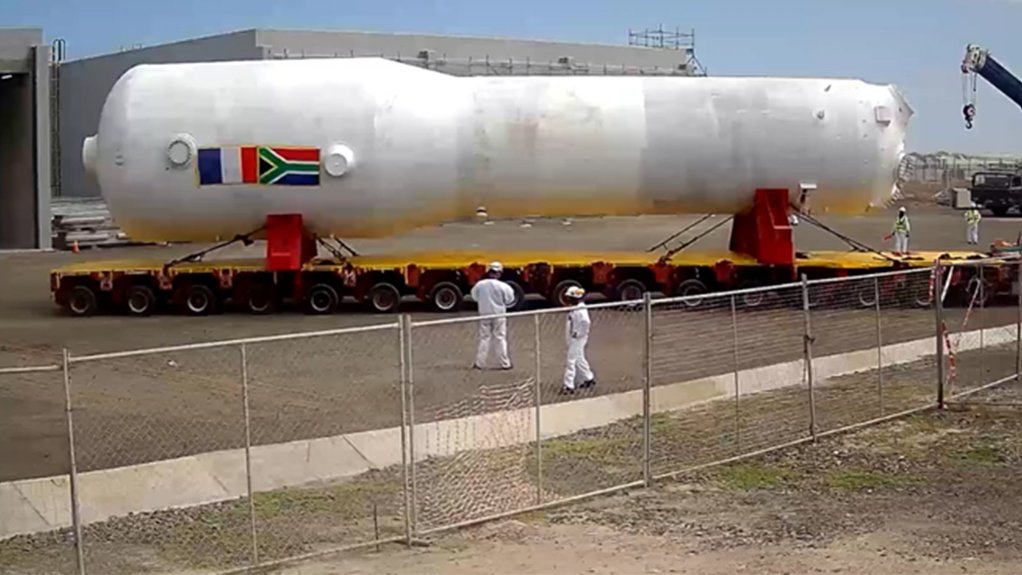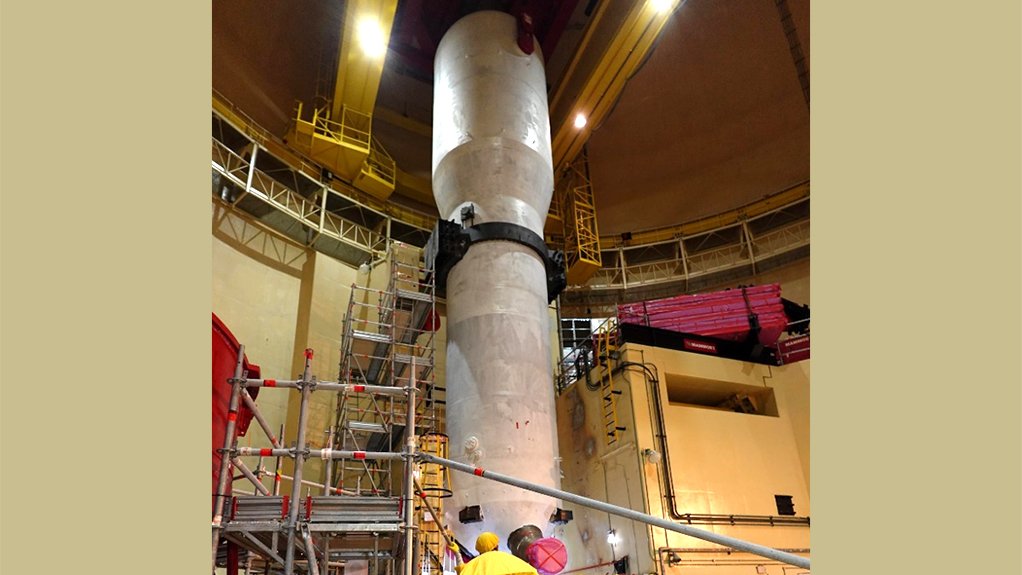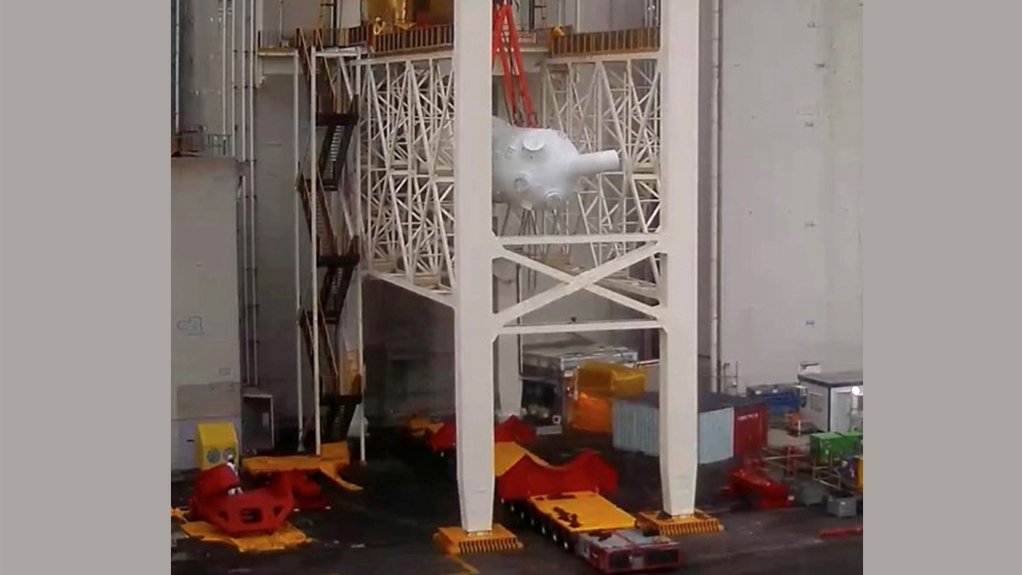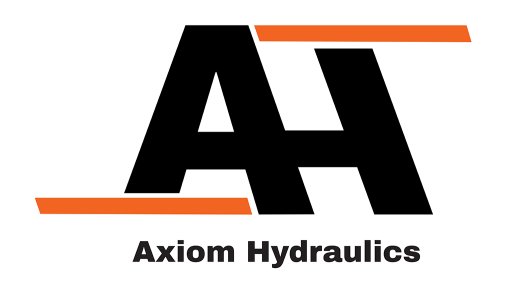Eskom says ‘unexpected challenges’ during Koeberg Unit 1 outage will delay restart




Unit 1 steam generator being moved to the storage building
Photo by Eskom
Steam generator being moved inside the containment building
Photo by Eskom
Steam generator being lowered from gantry
Photo by Eskom
The first Unit 1 steam generator at the Koeberg power station has been removed from the containment building and placed into an on-site storage building – a development that Eskom describes as a major milestone for a project that has had numerous false starts during previous outages.
However, the State-owned utility has also confirmed that, as a result of “unexpected challenges” during the current long-duration outage, the original return to service date of early June is “no longer achievable”.
However, Electricity Minister Dr Kgosientsho Ramokgopa later revealed that the project was running 45 days behind schedule, which meant the unit was now unlikely to be available to support South Africa through the high-demand winter period.
“Although every effort is being made to reduce the impact, we are currently running a few weeks late,” Eskom said in a statement, adding that the generation production plan was being updated to minimise the impact of the projected delay.
The removal of the first steam generator came only days after the National Nuclear Regulator (NNR) announced that the 60-day period for receiving written representations from members of the public on Koeberg’s application to operate beyond its mid-2024 licence expiry date had closed.
While central to the utility’s plan to extend the life of the nuclear power station for a further 20 years, the replacement project has faced heavy criticism from both environmental groups and energy commentators.
Environmental opponents to the extension have already raised concerns about the consultation process being pursued by the NNR and have also expressed anxiety about the safety case for the life-extension, as well as with the project’s rising costs and corruption at Eskom.
Questions are also continually being raised about the direct and indirect costs of the project, with Eskom having acknowledged that the 2010 cost estimate of R20-billion is no longer accurate but has not yet provided a revised expenditure figure.
The indirect costs, meanwhile, have also been calculated to be substantial, given ongoing loadshedding and the fact that having a Koeberg unit out of service for most of 2023 will add one stage to loadshedding when such cuts are implemented.
Once the Unit 1 replacement is completed, Eskom intends pursuing a similar long-duration outage at Unit 2, leaving Eskom without electricity production from half of Koeberg for most of 2023.
The Unit 1 outage began on December 10 and was expected to continue for about 180 days, while Unit 2 will be shut in September for a similar period after a previous attempt to replace the steam generators was postponed when it emerged that Eskom’s storage facilities had not been completed in time.
Eskom insists, however, that the new steam generators are the last large component replacements needed to ensure Koeberg can operate safely for the requested additional 20-year period.
It also underlines the engineering and logistical complexity of the removal of the first steam generators, explaining that it involved moving steam generators that are installed vertically and taking them out of the containment building horizontally at an elevation of 20 m before placing them on a flatbed transporter.
The old steam generators are painted in a white coating as a preventative measure to eliminate the chance of spreading any surface contamination, before being placed in the storage facility that will be sealed with a concrete door. Eskom then has ten years to dispose of the steam generators.
In a statement Eskom noted that each steam generator is 22 m long, or the height of a six-story building, and weighs over 320 t, which the utility notes as being heavier than a Boeing 747.
Eskom also indicates that the removal and replacement of Unit 1’s other two steam generators will involve the following sequence of activities:
- Rigging the remaining two steam generators out from their positions inside the containment building;
- Rigging the three new steam generators into their exact position inside the containment building;
- Performing six critical welds (two on each steam generator) that join the steam generators to the primary system piping;
- Performing radiography on the welds to ensure they meet the code requirements;
- Reinstalling all the access platforms that enable people to work all the way up the steam generators (seven stories of permanent structures and temporary scaffolding);
- Reinstalling all the other piping connections (steam pipe at the top, feedwater pipe, and all the other smaller sampling and instrumentation connections) once access is available;
- Installing new thermal insulation over the whole steam generator surface and all the pipes that were worked on, with about 120 t having been removed; and
- Removing all the temporary equipment that was required to be installed to allow the work to be completed safely.
“After which we still need to complete the maintenance activities scheduled for the outage, commission all the systems, refuel the reactor, and return the unit to service,” the utility said in a statement.
Article Enquiry
Email Article
Save Article
Feedback
To advertise email advertising@creamermedia.co.za or click here
Comments
Press Office
Announcements
What's On
Subscribe to improve your user experience...
Option 1 (equivalent of R125 a month):
Receive a weekly copy of Creamer Media's Engineering News & Mining Weekly magazine
(print copy for those in South Africa and e-magazine for those outside of South Africa)
Receive daily email newsletters
Access to full search results
Access archive of magazine back copies
Access to Projects in Progress
Access to ONE Research Report of your choice in PDF format
Option 2 (equivalent of R375 a month):
All benefits from Option 1
PLUS
Access to Creamer Media's Research Channel Africa for ALL Research Reports, in PDF format, on various industrial and mining sectors
including Electricity; Water; Energy Transition; Hydrogen; Roads, Rail and Ports; Coal; Gold; Platinum; Battery Metals; etc.
Already a subscriber?
Forgotten your password?
Receive weekly copy of Creamer Media's Engineering News & Mining Weekly magazine (print copy for those in South Africa and e-magazine for those outside of South Africa)
➕
Recieve daily email newsletters
➕
Access to full search results
➕
Access archive of magazine back copies
➕
Access to Projects in Progress
➕
Access to ONE Research Report of your choice in PDF format
RESEARCH CHANNEL AFRICA
R4500 (equivalent of R375 a month)
SUBSCRIBEAll benefits from Option 1
➕
Access to Creamer Media's Research Channel Africa for ALL Research Reports on various industrial and mining sectors, in PDF format, including on:
Electricity
➕
Water
➕
Energy Transition
➕
Hydrogen
➕
Roads, Rail and Ports
➕
Coal
➕
Gold
➕
Platinum
➕
Battery Metals
➕
etc.
Receive all benefits from Option 1 or Option 2 delivered to numerous people at your company
➕
Multiple User names and Passwords for simultaneous log-ins
➕
Intranet integration access to all in your organisation

















